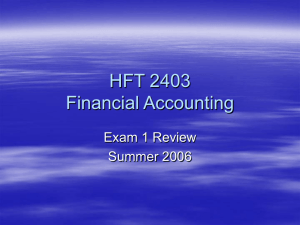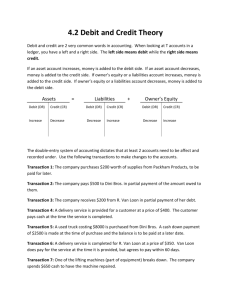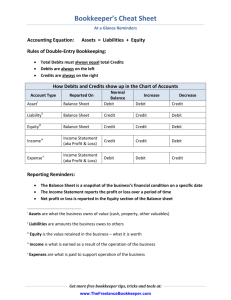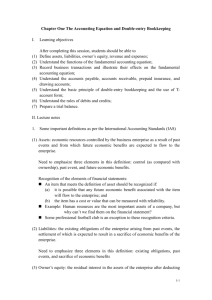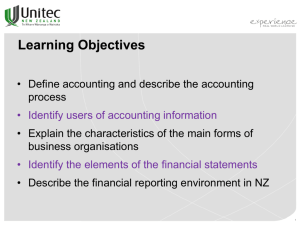The Accounting Equation
advertisement
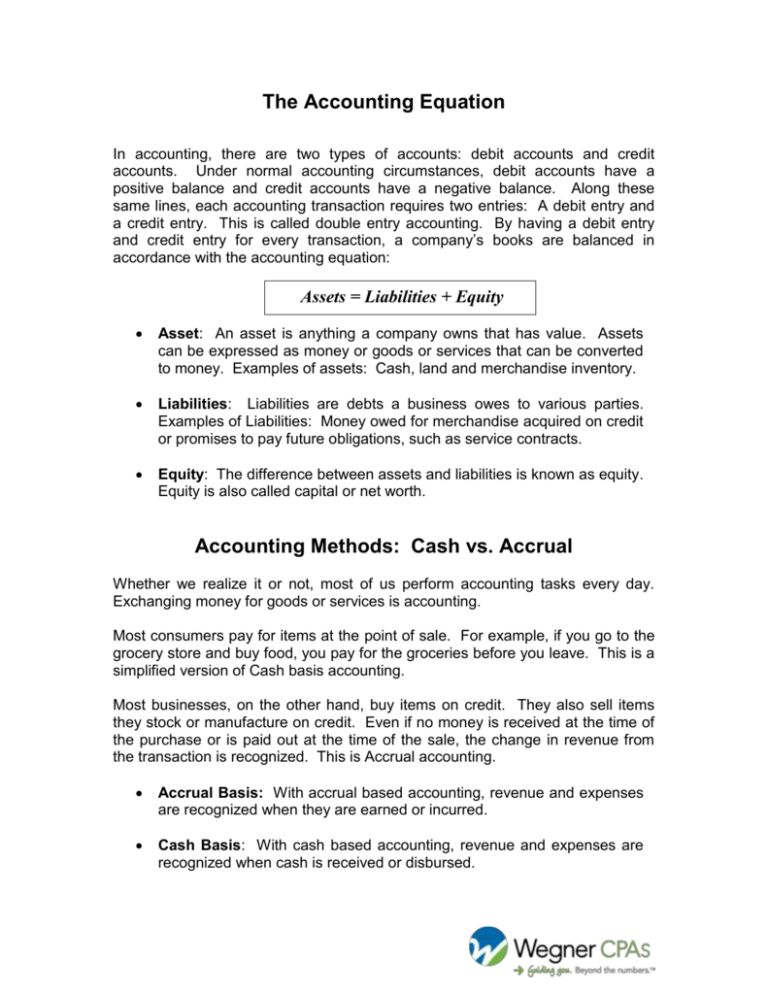
The Accounting Equation In accounting, there are two types of accounts: debit accounts and credit accounts. Under normal accounting circumstances, debit accounts have a positive balance and credit accounts have a negative balance. Along these same lines, each accounting transaction requires two entries: A debit entry and a credit entry. This is called double entry accounting. By having a debit entry and credit entry for every transaction, a company’s books are balanced in accordance with the accounting equation: Assets = Liabilities + Equity Asset: An asset is anything a company owns that has value. Assets can be expressed as money or goods or services that can be converted to money. Examples of assets: Cash, land and merchandise inventory. Liabilities: Liabilities are debts a business owes to various parties. Examples of Liabilities: Money owed for merchandise acquired on credit or promises to pay future obligations, such as service contracts. Equity: The difference between assets and liabilities is known as equity. Equity is also called capital or net worth. Accounting Methods: Cash vs. Accrual Whether we realize it or not, most of us perform accounting tasks every day. Exchanging money for goods or services is accounting. Most consumers pay for items at the point of sale. For example, if you go to the grocery store and buy food, you pay for the groceries before you leave. This is a simplified version of Cash basis accounting. Most businesses, on the other hand, buy items on credit. They also sell items they stock or manufacture on credit. Even if no money is received at the time of the purchase or is paid out at the time of the sale, the change in revenue from the transaction is recognized. This is Accrual accounting. Accrual Basis: With accrual based accounting, revenue and expenses are recognized when they are earned or incurred. Cash Basis: With cash based accounting, revenue and expenses are recognized when cash is received or disbursed. Debit & Credit Cheat Sheet Type Debit Credit Bank Account Increase Decrease Accounts Receivable Increase Decrease Other Current Asset Increase Decrease Fixed Asset Increase Decrease Other Asset Increase Decrease Accounts Payable Decrease Increase Credit Card Decrease Increase Other Current Liability Decrease Increase Long Term Liability Decrease Increase Equity Decrease Increase Income (Revenue) Decrease Increase Cost of Goods Sold Increase Decrease Expense Increase Decrease Other Income (Revenue) Decrease Increase Other Expense Increase Decrease


